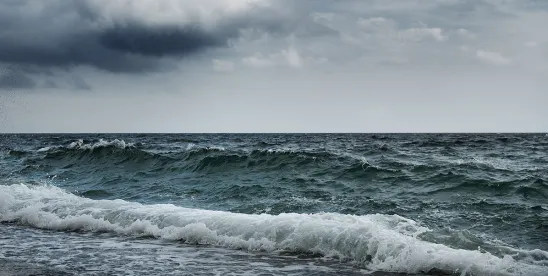Debate continues on whether the UAE Consensus achieved at COP28 represents a promising step forward or a missed opportunity in the drive towards climate neutral energy systems. However, the agreement that countries should “transition away from fossil fuels” and triple green power capacity by 2030 spotlights the need for countries to further embrace renewable power.
This series will examine the issues stakeholders need to consider in connection with deep-sea mining. We first provide an introduction to deep-sea mining and its current status. Future articles will consider in greater detail the regulatory and contractual landscape, important practical considerations, and future developments, including decisions of the ISA Council.
POLYMETALLIC NODULES
Current technology for the generation of wind and solar power (as well as the batteries needed to store such power) requires scarce raw materials, including nickel, manganese, cobalt, and copper. The fact that these minerals are found in the millions of polymetallic nodules scattered on areas of the ocean floor gives rise to another debate on whether the deep-sea mining of these nodules should be pursued.
This issue attracted considerable attention over the summer of 2023, when the International Seabed Authority (ISA) Assembly and Council held its 28th Session and, in January 2024, when Norway’s parliament (the Storting) made Norway the first country to formally authorise seabed mining activities in its waters.
INTERNATIONAL REGULATION OF DEEP-SEA MINERALS: UNCLOS AND ISA
The United Nations Convention on the Law of the Sea (UNCLOS) provides a comprehensive regime for the management of the world’s oceans. It also established ISA.
ISA is the body that authorises international seabed exploration and mining. It also collects and distributes the seabed mining royalties in relation to those areas outside each nation’s exclusive economic zone (EEZ).
Since 1994, ISA has approved over 30 ocean-floor mining exploration contracts in the Atlantic, Pacific, and Indian oceans, with most covering the so-called ‘Clarion-Clipperton Zone’ (an environmental management area of the Pacific Ocean, between Hawaii and Mexico). These currently-approved contracts run for 15 years and permit contract holders to seek out (but not commercially exploit) polymetallic nodules, polymetallic sulphides, and cobalt-rich ferromanganese crusts from the deep seabed.
UNCLOS TWO-YEAR RULE AND ISA’S 28TH SESSION
Section 1(15) of the annex to the 1994 Implementation Agreement includes a provision known as the “two-year rule.” This provision allows any member state of ISA that intends to apply for the approval of a plan of work for exploitation of the seabed to request that the ISA Council draw up and adopt regulations governing such exploitation within two years.
In July 2021, the Republic of Nauru triggered the two-year rule, seeking authority to undertake commercial exploitation of polymetallic nodules under license. That set an operative deadline of 9 July 2023.
At meetings of the ISA Assembly and ISA Council in July 2023, the ISA Council determined that more time was needed to establish processes for prospecting, exploring, and exploiting mineral resources, and a new target was set for finalising the rules: July 2025.
The expiration of the two-year rule in July 2023 does allow mining companies to submit a mining license application at any time. However, the above extension gives the ISA Council direct input into the approval process, which will make approval of any application difficult.
NORWAY’S DEEP-SEA MINING PLAN
State legislation regulates deep-sea mining in different EEZs. Norway is one of the only countries that has its own legislation (the Norway Seabed Minerals Act of 2019) regulating the exploration and extraction of deep-sea minerals.
In December 2023, Norway agreed to allow seabed mineral exploration off the coast of Norway, ahead of a formal parliamentary decision. The proposal was voted 80-20 in favour by the Storting on 9 January 2024.
The proposal will permit exploratory mining across a large section of the Norwegian seabed, after which the Storting can decide whether to issue commercial permits.
The decision initially applies to Norwegian waters and exposes an area larger than Great Britain to potential sea-bed mining, although the Norwegian government has noted that it will only issue licenses after more environmental research has been done.
The Norwegian government has defended the plan as a way to seize an economic opportunity and shore up the security of critical supply chains. However, there is concern that this will pave the way towards deep-sea mining around the world. Green activists, scientists, fishermen, and investors have called upon Oslo to reconsider its position. They cite the lack of scientific data about the effects of deep-sea mining on the marine environment, as well as the potential impact on Arctic ecosystems. In November 2023, 120 European Union lawmakers wrote an open letter to Norwegian members of the Storting, urging them unsuccessfully to reject the project, and in February 2024, the European Parliament voted in favour of a resolution that raised concerns about Norway’s deep-sea mining regulations. This resolution carries no legal power, but it does send a strong signal to Norway that the European Union does not support its plans.
In May 2024, WWF-Norway announced it will sue the Norwegian government for opening its seabed to deep-sea mining. WWF-Norway claim that the government has failed to properly investigate the consequences of its decision, has acted against the counsel of its own advisors, and has breached Norwegian law.
METHODS OF POLYMETALLIC NODULE EXTRACTION
Should Norway, or any other nation, initiate commercial deep-seabed mining, one of the following methods of mineral extraction may be employed:
Continuous Line Bucket System
This system utilises a surface vessel, a loop of cable to which dredge buckets are attached at 20–25 meter intervals, and a traction machine on the surface vessel, which circulates the cable. Operating much like a conveyor belt, ascending and descending lines complete runs to the ocean floor, gathering and then carrying the nodules to a ship or station for processing.
Hydraulic Suction System
A riser pipe attached to a surface vessel “vacuums” the seabed, for example, by lifting the nodules on compressed air or by using a centrifugal pump. A separate pipe returns tailings to the area of the mining site.
Remotely Operated Vehicles (ROVs)
Large ROVs traverse the ocean floor collecting nodules in a variety of ways. This might involve blasting the seafloor with water jets or collection by vacuuming.
Recent progress has been made in the development of these vehicles; a pre-prototype polymetallic nodule collector was successfully trialed in 2021 at a water depth of 4,500 metres, and in December 2022, the first successful recovery of polymetallic nodules from the abyssal plain was completed, using an integrated collector, riser, and lift system on an ROV. A glimpse of the future of deep-sea ROVs perhaps comes in the form of the development of robotic nodule-collection devices, equipped with artificial intelligence that allows them to distinguish between nodules and aquatic life.
Key to all three methods of mineral extraction is the production support vessel, the main facility for collecting, gathering, filtering, and storing polymetallic nodules. Dynamically positioned drillships, formerly utilised in the oil and gas sector, have been identified/converted for this purpose, and market-leading companies active in deep-water operations, including drilling and subsea construction, are investing in this area. It will be interesting to see how the approach to the inherent engineering and technological challenges will continue to develop.
THE RISKS OF DEEP-SEA MINING
As a nascent industry, deep-sea mining presents risks to both the environment and the stakeholders involved:
Environmental Risks
ISA’s delayed operative deadline for finalising regulations has been welcomed by parties who are concerned about the environmental impact that deep-sea mining may have.
Scientists warn that mining the deep could cause an irreversible loss of biodiversity to deep-sea ecosystems; sediment plumes, wastewater, and noise and light pollution all have the potential to seriously impact the species that exist within and beyond the mining sites. The deep-ocean floor supports thousands of unique species, despite being dark and nutrient-poor, including microbes, worms, sponges, and other invertebrates. There are also concerns that mining will impact the ocean’s ability to function as a carbon sink, resulting in a potentially wider environmental impact.
Stakeholder and Investor Risks
While deep-sea mining doesn’t involve the recovery and handling of combustible oil or gas, which is often associated with offshore operations, commercial risks associated with the deployment of sophisticated (and expensive) equipment in water depths of 2,000 metres or greater are significant. In April 2021, a specialist deep-sea mining subsidiary lost a mining robot prototype that had uncoupled from a 5-kilometer-long cable connecting it to the surface. The robot was recovered after initial attempts failed, but this illustrates the potentially expensive problems that deep-sea mining poses. Any companies wishing to become involved in deep-sea mining will also need to be careful to protect their reputation. Involvement in a deep-sea mining project that causes (or is perceived to cause) environmental damage or that experiences serious problems could attract strong negative publicity.
INVESTOR CONSIDERATIONS
Regulations have not kept up with the increased interest in deep-sea mining, and there are no clear guidelines on how to structure potential deep-sea investments. This is especially true in international waters, where a relationship with a sponsoring state is necessary. Exploitative investments have not been covered by ISA, and it is unclear how much control investors will have over the mining process. It is also unclear how investors might be able to apportion responsibility for loss/damage and what level of due diligence needs to be conducted ahead of operations. Any involvement carries with it significant risk, and stakeholders will do well to manage their rights and obligations as matters evolve.





 />i
/>i

